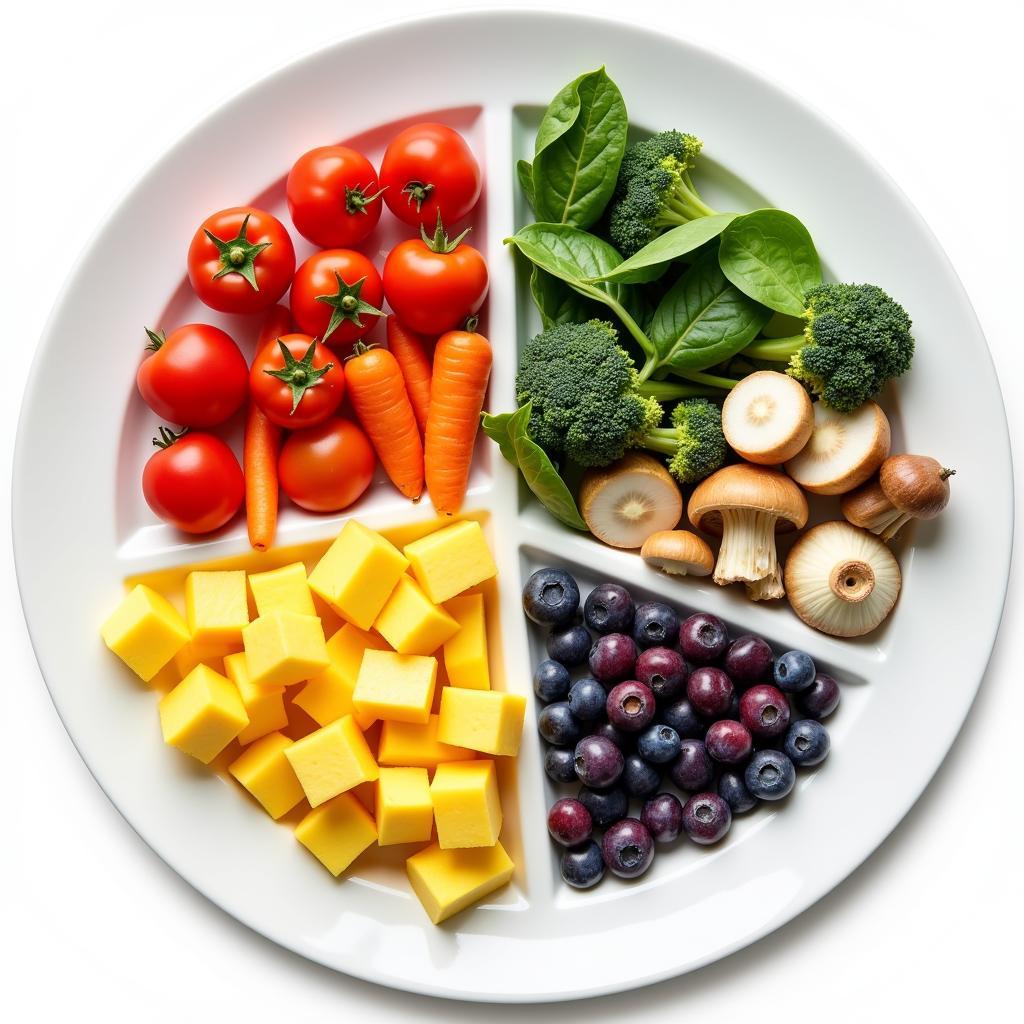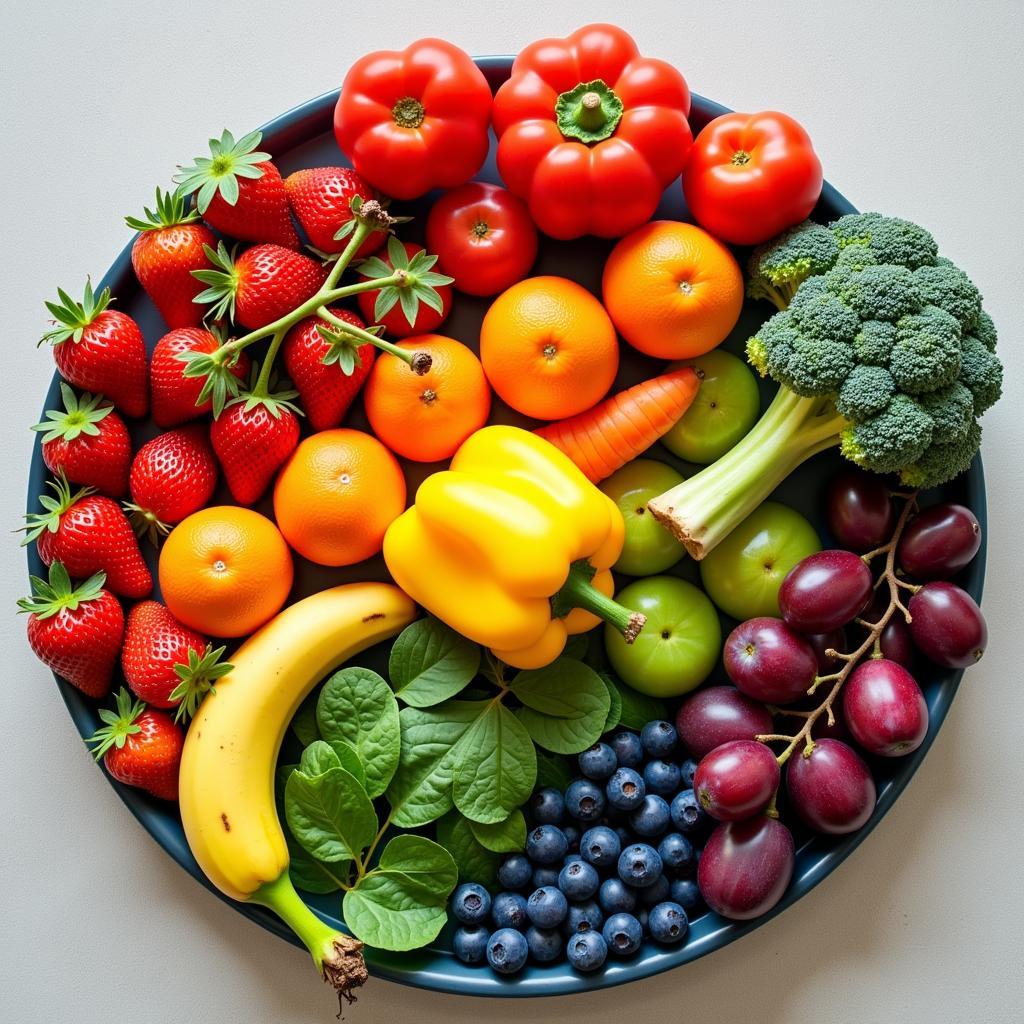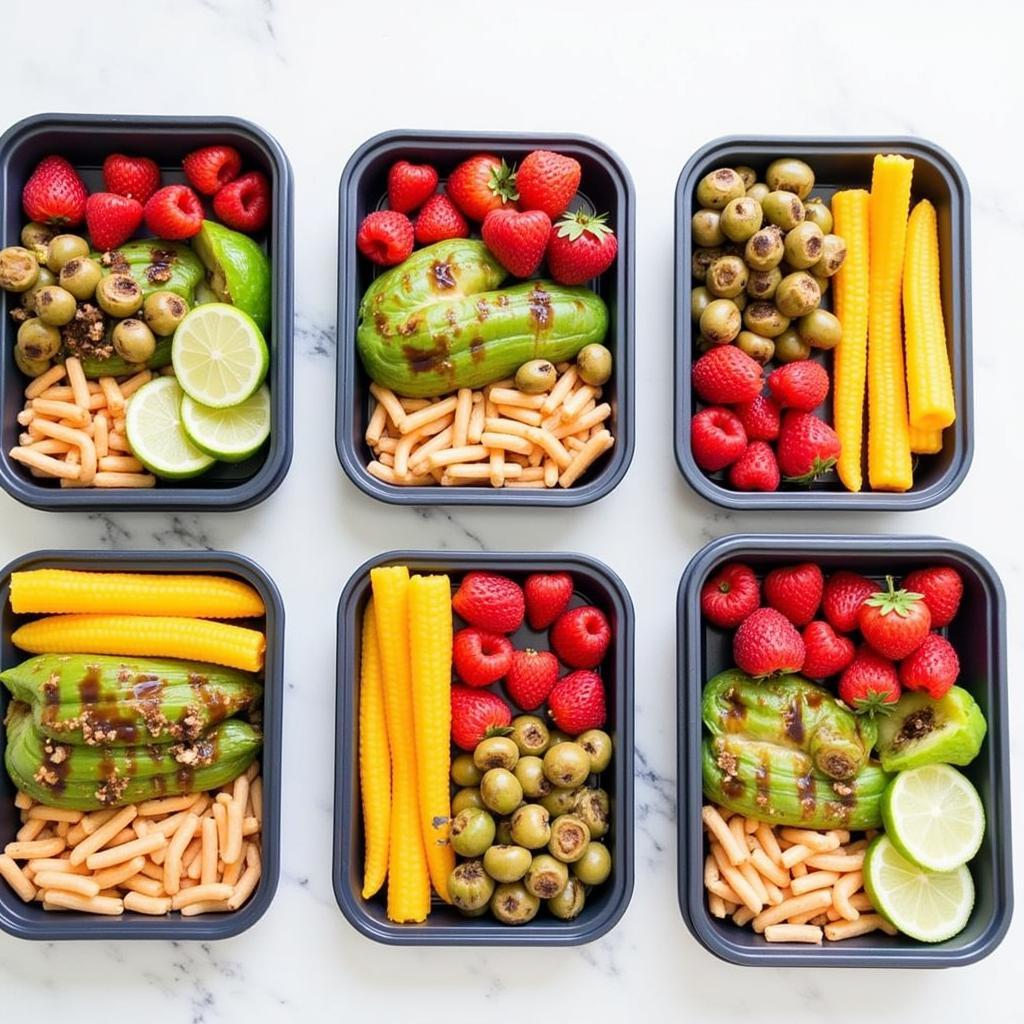Color Coding Food isn’t just a trendy TikTok hack; it’s a powerful tool that can transform your relationship with food. Whether you’re aiming for weight management, improved athletic performance, or simply a more balanced diet, understanding the principles of color coding can provide a visual and intuitive guide to healthy eating. It eliminates the need for complex calorie counting and restrictive diet plans, making healthy choices easier than ever. Let’s delve into the vibrant world of color-coded nutrition and discover how it can revolutionize your meals.
What is Color Coding Food and Why Should You Care?
Color coding food involves categorizing foods based on their predominant color, which often reflects their nutrient profile. Each color group represents a unique set of vitamins, minerals, and antioxidants that contribute to overall health and well-being. By ensuring a variety of colors on your plate, you naturally increase your intake of essential nutrients. This approach simplifies healthy eating, making it less of a chore and more of a joyful exploration of flavors and textures. For example, incorporating more red foods, like tomatoes, can boost your lycopene intake, a powerful antioxidant. Aiming for a rainbow on your plate ensures a diverse nutrient intake. Do you want to effortlessly improve your health? Color coding is your answer!
 Color Coded Food Plate for Balanced Diet
Color Coded Food Plate for Balanced Diet
This method can be especially helpful for picky eaters, making healthy food more appealing and encouraging them to try new things. Think vibrant bell peppers, juicy berries, and leafy greens – suddenly, healthy eating becomes an exciting adventure rather than a dreaded task. This visual approach to nutrition is particularly beneficial for visual learners and those who find traditional dietary guidelines overwhelming. It simplifies the process and makes healthy eating more accessible and engaging. Choosing best flake fish food can be easier with this method.
Decoding the Rainbow: A Guide to Food Colors
Each color group offers a unique set of health benefits. Let’s explore the spectrum:
- Red: Rich in lycopene, an antioxidant linked to heart health and cancer prevention. Think tomatoes, strawberries, and red peppers.
- Orange/Yellow: Packed with beta-carotene, which converts to vitamin A, essential for vision and immune function. Examples include carrots, sweet potatoes, and oranges.
- Green: Abundant in vitamins K, C, and folate, crucial for bone health, immunity, and cell growth. Leafy greens, broccoli, and green beans are excellent choices.
- Blue/Purple: High in antioxidants called anthocyanins, known for their anti-inflammatory and cognitive-boosting properties. Blueberries, grapes, and eggplant are great sources.
- White/Brown: Often contain compounds like allicin (in garlic) and fiber, promoting heart health and digestive regularity. Examples include mushrooms, onions, and cauliflower.
Remember, variety is key! Aim for a diverse range of colors on your plate to maximize your nutrient intake.
 Rainbow of Fruits and Vegetables
Rainbow of Fruits and Vegetables
Are you ready to transform your plate into a vibrant masterpiece? Embracing color coding is the first step towards a healthier and more vibrant you. If you are looking for pallet of cat food, color-coding can also help you diversify your pet’s diet.
Practical Tips for Implementing Color Coding
- Plan your meals: Before heading to the grocery store, visualize your plate and aim for a variety of colors.
- Shop the rainbow: Fill your cart with fruits and vegetables of different hues.
- Make it fun: Get creative with recipes and presentations. Involve your family in the process.
- Start small: Don’t feel pressured to overhaul your diet overnight. Gradually incorporate more colorful foods into your meals.
- Be mindful of processed foods: While some processed foods may be colorful, focus on whole, unprocessed options.
How Can Color Coding Food Help with Weight Management?
Color coding can be a valuable tool for weight management, as it encourages the consumption of nutrient-rich, lower-calorie foods like fruits and vegetables. By focusing on filling your plate with colorful produce, you naturally reduce your intake of less healthy, calorie-dense options.
“Color coding helps clients visualize their nutritional intake and make healthier choices without feeling restricted,” says registered dietitian, Emily Carter, RD. “It’s a simple yet effective strategy for sustainable weight management.”
 Color Coded Meal Prep Containers for Weight Management
Color Coded Meal Prep Containers for Weight Management
Color Coding Food for Athletes
For athletes, color coding food can be especially beneficial. Different color groups provide specific nutrients that support athletic performance. For instance, red foods are rich in nitrates, which can enhance endurance. Green foods are packed with iron, essential for oxygen transport. By strategically incorporating a variety of colors, athletes can optimize their nutrient intake and fuel their bodies for optimal performance. Looking for optum dog food for your active canine companion? Color-coding can be applied to pet food as well, ensuring a balanced nutritional profile.
Conclusion
Color coding food offers a simple yet effective way to enhance your diet and overall health. By embracing the rainbow on your plate, you can effortlessly increase your intake of essential nutrients, support weight management goals, and even boost athletic performance. So, start exploring the vibrant world of color-coded nutrition today and unlock the power of a balanced and colorful diet! Don’t forget that sometimes a dog food red may indicate specific ingredients, and color-coding can help you identify them.
FAQ
- Is color coding food suitable for children?
- Can I use color coding with any type of diet?
- Are there any downsides to color coding food?
- How can I make color coding food fun for my family?
- What if I don’t like certain colored foods?
- How do I incorporate color coding into my busy schedule?
- Can color-coding be applied to fast food treat for a four legged friend crossword clue?
Need support? Contact us at Phone Number: 02437655121, Email: minacones@gmail.com Or visit us at: 3PGH+8R9, ĐT70A, thôn Trung, Bắc Từ Liêm, Hà Nội, Việt Nam. We have a 24/7 customer support team.